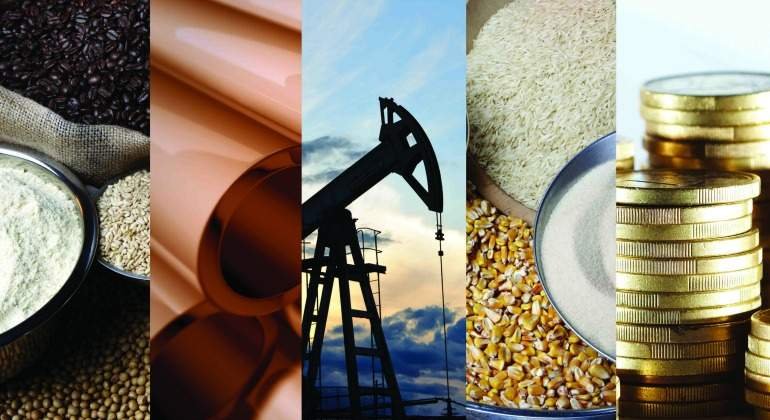Cheaper iron ore and oil will start to reflect in second half results
29/09/2022
Brazilian companies dealing in commodities had been in an exceptional operating moment since the second half of 2020, with the recovery after the first wave of the pandemic. The rapid recovery of the world economy has caused iron ore, oil and pulp prices to soar, boosting revenues. In this second half of 2022, however, the basis of comparison with previous periods, associated with fears of economic recession that put pressure on prices, are expected to begin to reflect on results.
Iron ore prices tumbled 36.4% in comparison to the average in the third quarter of 2021, according to the S&P Platts index, and 24.5% over the average in the second quarter of this year, considering the average of $103.83 a tonne in the current quarter through Thursday. Less appetite from China, the commodity’s main buyer, has also pressured steel prices in Brazil and in foreign markets.
If since 2020, the restrictive circulation measures in the rest of the world as opposed to the moment closer to “normal” in China have led to shortages, now the circulation restrictions in the Asian country and the deceleration of the local economy affect prices. “What lifted prices in the post-pandemic period was the restriction in supply, with mining and steel companies still struggling to meet pent-up demand,” says Daniel Sasson, analyst with Itaú BBA. “Today we have a fairly challenging scenario in terms of economic activity in China, with initiatives to boost it not doing very well.”
/i.s3.glbimg.com/v1/AUTH_37554604729d4b2f9f3eb9ad8a691345/internal_photos/bs/2022/w/5/4zcwtnShSVTR2iAsMv3Q/30emp-100-comm-b4-img02.jpg)
Gabriela Joubert — Foto: Divulgação
“The expectations for mining companies is that revenues will be lower because prices are lower, even with a recovery in sales volume, both in annual and quarterly,” says Gabriela Joubert, chief equity analyst with Inter. In steel, she believes that the domestic market will not feel the drop in international prices as much because of recent readjustments in the companies.
Mr. Sasson sees different impacts for each company. “The concerns we see today is with this synchronized global deceleration, although short-term pressures are evident, the bigger question is to understand where profitability and margin levels will stabilize,” he says. The executive points out that companies like Gerdau, less exposed to ore, will sustain better results than Vale, CSN or Usiminas in the quarter.
Oil prices also felt the drop in the current quarter. The Brent barrel, used as a reference by the Brazilian companies, has an average price of $95.67 in the quarter, which represents a 12.8% drop compared to the second quarter. In the annual comparison, however, there was an increase of 31.8%.
“In these last quarters we have seen growing doubts about the global demand for oil, with expectations of lower-than-expected growth in the economy, amid accelerated inflation and high interest rates to contain these effects,” explains Ilan Abertman, analyst at Ativa Investimentos. He points out that the uncertainties about supply end up sustaining the price near $100 a barrel.
Ms. Joubert recalls that the member countries of the Organization of Petroleum Exporting Countries (OPEC) are having difficulty in raising production levels, which creates more triggers than in the ore case to maintain prices. “We will see a quarterly drop in revenues, but still above historical levels. What is likely to happen is a balancing of expectations,” she says.
Mr. Abertman does not see very big changes in the companies’ fundamentals even with the quarterly drop in oil prices. “On the revenue side we won’t have oil at $110 per barrel anymore. At $90, however, is still higher than a year ago, and in the case of Petrobras, there is a pre-salt premium that ends up offsetting the price,” he says.
In terms of costs for the companies, the drop in oil and ore prices should not necessarily translate into relief in this line on their earnings reports. Analysts remember that there is an equity equivalence accounting effect that in which items are only posted in the financial statements when they are used, and not when they are purchased.
“A steelmaker still uses more expensive coal or ore bought at the beginning of the year, for example, which limits cost relief effects, at least in the quarterly comparison,” says Mr. Sasson. According to him, in the fourth quarter the cheaper basic materials are expected appear more strongly in the results.
The scenario for pulp is different. A survey by BTG Pactual shows that hardwood pulp (BHKP) traded in China closed at $863.95 a tonne last Friday, which represents a rise of 2.57% over July 1th and 44% over October 1th, 2021. Prices still at the top are expected to boost the revenues of the companies in the sector, analysts say.
“Demand remains very strong, and we had a bigger supply shock than in other commodities because of the suspension of certification of Russia’s wood with the sanctions,” says Ms. Joubert, with Inter. She points out that the shortage of wood used to manufacture pulp, together with the still high demand for paper and packaging in Brazil and abroad, help keep prices high.
Mr. Abertman, with Ativa, says the market is already pricing in a contraction in pulp in Suzano and Klabin securities, wondering if the current price above $800 a tonne is sustainable. “But from an operational point of view, the two companies had no operational downtime in the third quarter, which will end up generating higher revenues in the year-on-year and quarter-on-quarter comparisons.”
“We may even see signs of a more significant drop in the fourth quarter, but it is difficult to see it in the companies’ results,” says Mr. Sasson, with Itaú BBA. He points out that the dynamics of the pulp market, with more spaced contracts than those of ore and oil, increases the temporal space in which price variations are actually captured by the companies in their earning reports.
*By Felipe Laurence — São Paulo
Source: Valor International

/i.s3.glbimg.com/v1/AUTH_37554604729d4b2f9f3eb9ad8a691345/internal_photos/bs/2022/Q/A/6OABDsQO25p8wA2rEPNw/28bra-100-bala-a4-img01.jpg)
